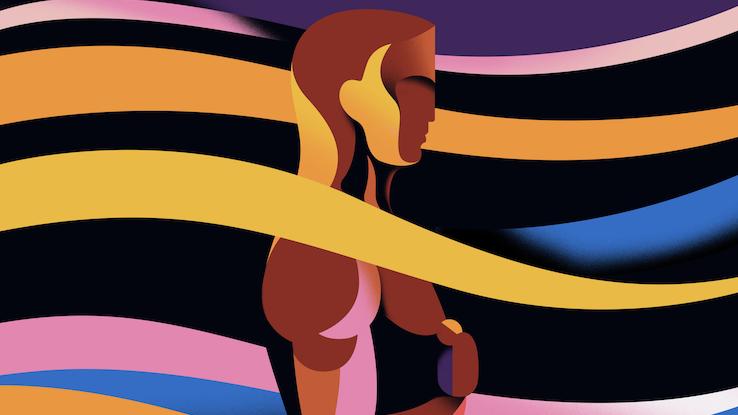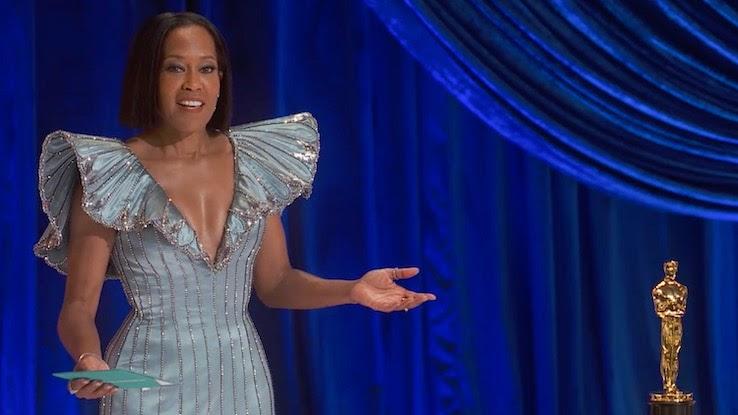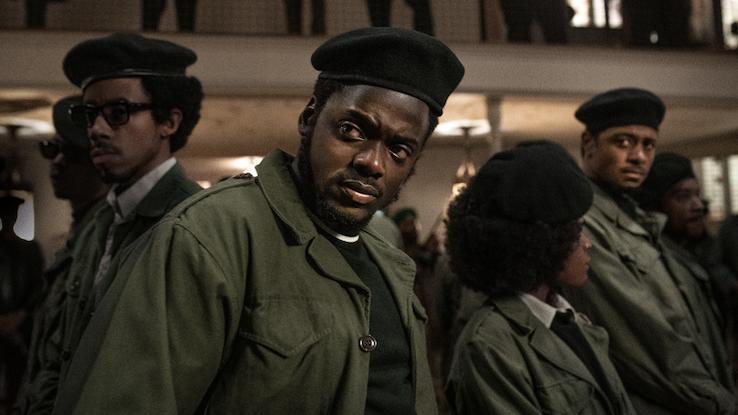
Don’t blame Anthony Hopkins. The 93rd Oscars were a dud even before he unexpectedly won Best Actor and the ceremony had to end without a speech — he was sleeping at home in Wales. The producers of the show had bet on the late Chadwick Boseman winning that category and seemed to want to end the show on a very emotional note. So, they switched the order — Best Picture is traditionally considered the big prize and the last to be awarded — and left the Best Actor category for last. It didn’t pay off.
That was just the last on a long list of attempts. The Academy of Motion Picture Arts and Sciences (A.M.P.A.S.) has pulled out all the stops to keep the show going. In June of last year, they announced the 93rd Oscars would air April 25, 2021, two full months after the initially planned date of February 28. Following months of theater closures, the Academy wanted to give studios more time to release their films. They made films released on streaming eligible for the Oscars and extended the date movies could be released until February 28, 2021.
That wasn’t all. After hiring the resourceful filmmaker Steven Soderbergh as one of this year’s Oscars producers — with Stacey Sher and Jesse Collins — it was announced Zooming in for the show wouldn’t be an option — probably the reason why the 83-year-old Hopkins didn’t even make a virtual appearance. He also didn’t expect to win. The Academy wanted an in-person ceremony that would be treated as a film or TV production, with maskless nominees and presenters. There were also multiple reports about this year’s ceremony being something “completely different” from what we’ve seen in years past.
Yet the audience didn’t seem to care enough about it. Even before the pandemic, the odds were already against the Academy. Ratings had been on a steady decline since 2014. Last year, 23.6 million people watched the ceremony — 44% less than in 2014. This year, the awards drew a meager 9.8 million viewers. That’s 58% less than last year’s low numbers.
And the Oscars is not the only awards ceremony that seems to be falling out of fashion. The Grammys only attracted an audience of 8.8 million viewers this year, a 53% drop compared to the previous year’s show. The Golden Globes fared even worse. The troublesome Globes — with most of the nominees and winners connecting remotely — lost 62% of its audience, with just 6.9 million viewers watching this year’s ceremony.
What Did the Oscars Look Like?
The ceremony delivered on its promise to be different, at least initially. It started with actress and director Regina King walking through Union Station with an Oscar in hand. The names of the ceremony’s presenters appeared on screen under the title “Starring.” King explained the awards would function like a movie set: When they were rolling, masks would be off, and when they weren’t rolling, masks would be on.

From there, King proceeded to introduce each of the nominees in the Best Original Screenplay category. The producers decided to forego the traditional introductory clips from each movie for most of the ceremony, opting instead for the presenters to offer some anecdotal information about the nominees. It just made things slower and less dynamic. There was a lot of tell and not enough show.
That wasn’t the only thing different from previous years. There wasn’t an orchestra making sure winners wouldn’t talk too long. The speeches, especially in the first half of the ceremony, were long and lacked the structure of a pre-written short acceptance. Granted, thanks to this disorderly format, we got Best Supporting Actor winner Daniel Kaluuya going off the rails and saying: “We’re breathing, we’re walking, it’s incredible. My mum, my dad, they had sex. It’s amazing. I’m here.” All this happened while his mother and sister were watching from the British Film Institute in London — one of the in-person international hubs the Academy allowed for those who couldn’t travel to Los Angeles — and resulted in one of the first memes of the night.
It also didn’t help that, for the most part, there weren’t surprises. We knew what was going to win in most categories. Nomadland took Best Bovie, Best Director for Chloé Zhao and Best Actress for Frances McDormand. Kaluuya won Best Supporting Actor for Judas and the Black Messiah. Yuy-Jung Youn won Best Supporting Actress for Minari. Soul was the Best Animated Feature, and Another Round the best international feature. Unless you count Mank and not Nomadland winning Best Cinematography and H.E.R. winning in the Best Song category for “Fight for You” from Judas and the Black Messiah, everything went according to script. Well, not everything. No one saw Hopkins winning.
It’s worth mentioning that some history was made during the ceremony. Mia Neal and Jamika Wilson were the first Black women to win an Oscar for hair and makeup for their work in Ma Rainey’s Black Bottom. Zhao was the first woman of color and the first Chinese woman to ever win in the directing category. And she’s only the second woman director with an Oscar; Kathryn Bigelow won in 2010 for The Hurt Locker. And Youn is the first Korean actor to win in one of the acting categories.
But even with history being made, the show, which was hostless one more year, felt long and, for the most part, monotonous. This year the musical performances were pre-taped and broadcast before the main telecast. Doing the same with some of the most technical and minor categories would also have helped.
How the Pandemic Shaped and Affected This Year’s Oscars
Regardless of how the ceremony looked or whether it dragged on for more than three hours, part of the problem the Oscars had this year was that, once again, people didn’t know or care about the movies that were nominated. After the Oscars nominations were announced, industry research firm Guts + Data surveyed 1,500 active entertainment consumers regarding their awareness of the films in the Best Picture category.

The historical drama Judas and the Black Messiah — starring Kaluuya and LaKeith Stanfield — was the most-known nominee, with 46% awareness. Netflix’s The Trial of the Chicago 7 was second with 39% awareness and Nomadland third with 35%. Paradoxically, the film with the most nominations this year — the black-and-white Mank with 10 Oscar noms — was last on the list with just 18% of those surveyed being familiar with the movie.
This, again, is hardly surprising or a 2021 novelty. To make nominated movies more palatable and in tune with audiences’ tastes, in 2009 the Academy expanded the Best Picture category to accommodate up to 10 nominations. That year, the Academy failed to include in that slot fan favorites but also critic darlings The Dark Knight and WALL·E.
With that rule change, the following year the Academy recognized Avatar, District 9 and Pixar’s Up among the Best Picture nominees. Mad Max: Fury Road and The Martian were among the nominees in the 2016 ceremony. And Black Panther was in 2019’s lineup, making it the first superhero movie to ever get a Best Picture nomination. But with most blockbuster-type releases postponed until the end of this year or even 2022, in 2020 there was no Black Panther or The Martian equivalent to nominate. The Oscars lacked name recognition.
Not only that, but 2021 could also continue to be a challenging year in terms of releases. We still don’t know what will and will not finally be out this year. Plus, the rule change that made films eligible for Oscars even if they were released during January and February of 2021 could mean a shorter window of opportunity for films to be released and remain eligible for next year’s Oscars. Unless the Academy moves the dates again, those eligibility dates for the 2022 Oscars would be from March 1 to December 31, 2021.
Of course, part of the reason why people aren’t tuning in to the Oscars is also linear TV’s decline in the era of streaming. The easiest way to watch the Oscars is with an old-fashioned cable subscription, but according to the Pew Research Center “the share of Americans who say they watch television via cable or satellite has plunged from 76% in 2015 to 56%” in 2021. Cord-cutters need either a pricey subscription to a service like YouTube TV or Hulu with the option of live TV — which costs $64.99 a month — or they can use an over-the-air indoor antenna. (I keep an antenna at home for the sole purpose of watching awards shows, but I also have an engineer husband who bought it, synchronizes the channels and deals with all the technical issues it entails, which are not nonexistent.)
Plus, who wants to watch a three-hour-long ceremony with commercial breaks, “boring” categories (sorry, Best Documentary Short and Best Achievement in Sound) and rambling speeches when you can watch the condensed best-moments clips on YouTube or Twitter or in an article?
This brings me to my final point: Bring the Oscars — and any awards ceremony, really — to streaming. Some will watch it live, but most will probably watch at their own convenience and fast-forward through whatever segments don’t interest them. ABC — which is owned by The Walt Disney Company — has the rights to broadcast the Oscars through 2028. Keep the Oscars on ABC but make them also available on Disney+ or Hulu (without the live option). More people may end up watching.
While giving her speech after winning her third acting Oscar, Frances McDormand floated an idea for the ceremony: a karaoke bar. The Academy should listen.

 Patricia Puentes
Patricia Puentes




